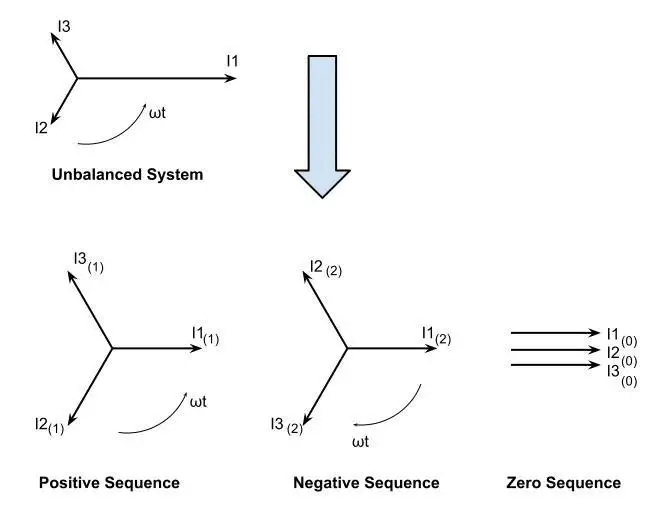Definition of Voltage Unbalance as per NEMA:
The voltage unbalance is defined as the maximum deviation from the average of three-phase voltage or current, divided by the average of the three-phase voltage or current. It is expressed in percent. According to NEMA (National Electrical Manufacturers Association of USA), the standard equation is as given below.
For example:

Voltage unbalance
= Maximum deviation from mean of {Vry,Vyb,Vbc}Mean of { Vry,Vyb,Vbc}
Definition of Voltage Unbalance as per IEC standard:
The unbalanced electrical network can be resolved into three balanced systems a positive sequence, negative sequence, and zero sequence system. If the system is balanced, the negative sequence and zero sequence components would be absent.
Positive sequence system:
A positive sequence means the magnitude of all three phases is equal, and phase displacement between the phases is 120 degrees. The impedance of each phase is identical. As the applied voltage and the impedance of each phase are equal, the current in each phase would be identical.

In a positive sequence, all the electrical quantities are equal and displace each other by 120 degrees. The phasor diagram of positive phase sequence components is given below.
Negative sequence system:

If the system voltage is unbalanced or the impedance of the circuit is unbalanced, the negative phase sequence will flow in the circuit. The negative phase sequence current is of the same frequency; however, the sequence of the current is opposite to the sequence of positive sequence components. If the positive sequence, negative sequence, and zero sequence components are designated as V1, V2, and V3, The negative unbalance factor (Voltage unbalance factor) = V2/ V1
